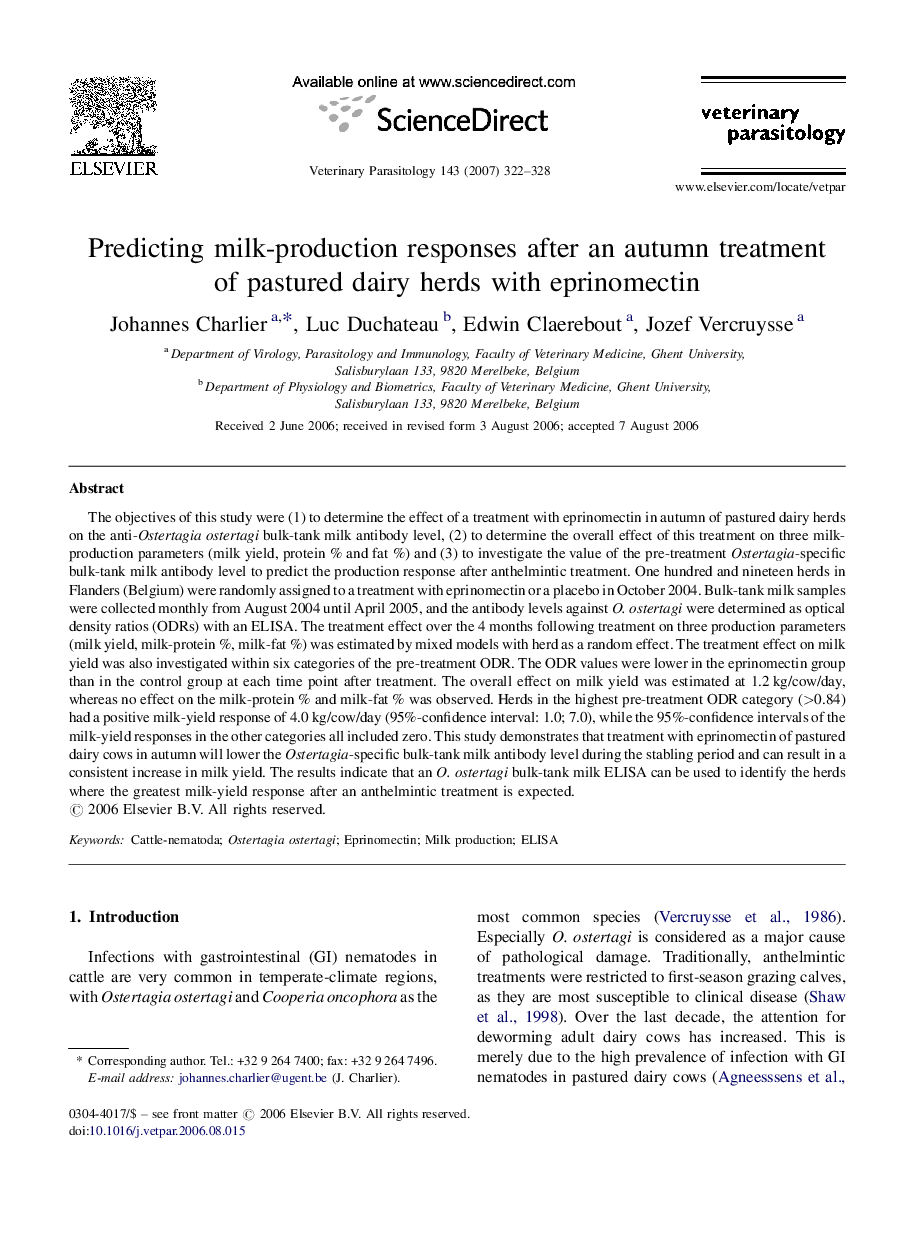| Article ID | Journal | Published Year | Pages | File Type |
|---|---|---|---|---|
| 2472098 | Veterinary Parasitology | 2007 | 7 Pages |
The objectives of this study were (1) to determine the effect of a treatment with eprinomectin in autumn of pastured dairy herds on the anti-Ostertagia ostertagi bulk-tank milk antibody level, (2) to determine the overall effect of this treatment on three milk-production parameters (milk yield, protein % and fat %) and (3) to investigate the value of the pre-treatment Ostertagia-specific bulk-tank milk antibody level to predict the production response after anthelmintic treatment. One hundred and nineteen herds in Flanders (Belgium) were randomly assigned to a treatment with eprinomectin or a placebo in October 2004. Bulk-tank milk samples were collected monthly from August 2004 until April 2005, and the antibody levels against O. ostertagi were determined as optical density ratios (ODRs) with an ELISA. The treatment effect over the 4 months following treatment on three production parameters (milk yield, milk-protein %, milk-fat %) was estimated by mixed models with herd as a random effect. The treatment effect on milk yield was also investigated within six categories of the pre-treatment ODR. The ODR values were lower in the eprinomectin group than in the control group at each time point after treatment. The overall effect on milk yield was estimated at 1.2 kg/cow/day, whereas no effect on the milk-protein % and milk-fat % was observed. Herds in the highest pre-treatment ODR category (>0.84) had a positive milk-yield response of 4.0 kg/cow/day (95%-confidence interval: 1.0; 7.0), while the 95%-confidence intervals of the milk-yield responses in the other categories all included zero. This study demonstrates that treatment with eprinomectin of pastured dairy cows in autumn will lower the Ostertagia-specific bulk-tank milk antibody level during the stabling period and can result in a consistent increase in milk yield. The results indicate that an O. ostertagi bulk-tank milk ELISA can be used to identify the herds where the greatest milk-yield response after an anthelmintic treatment is expected.
